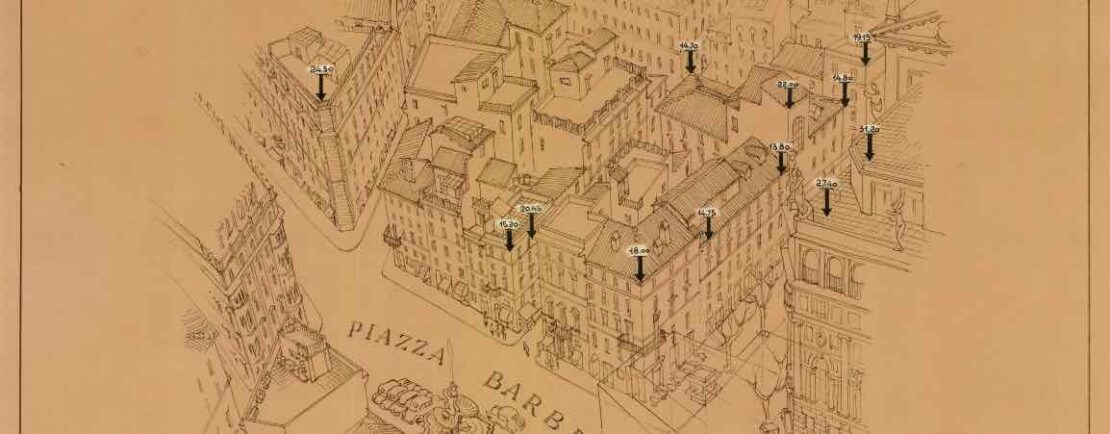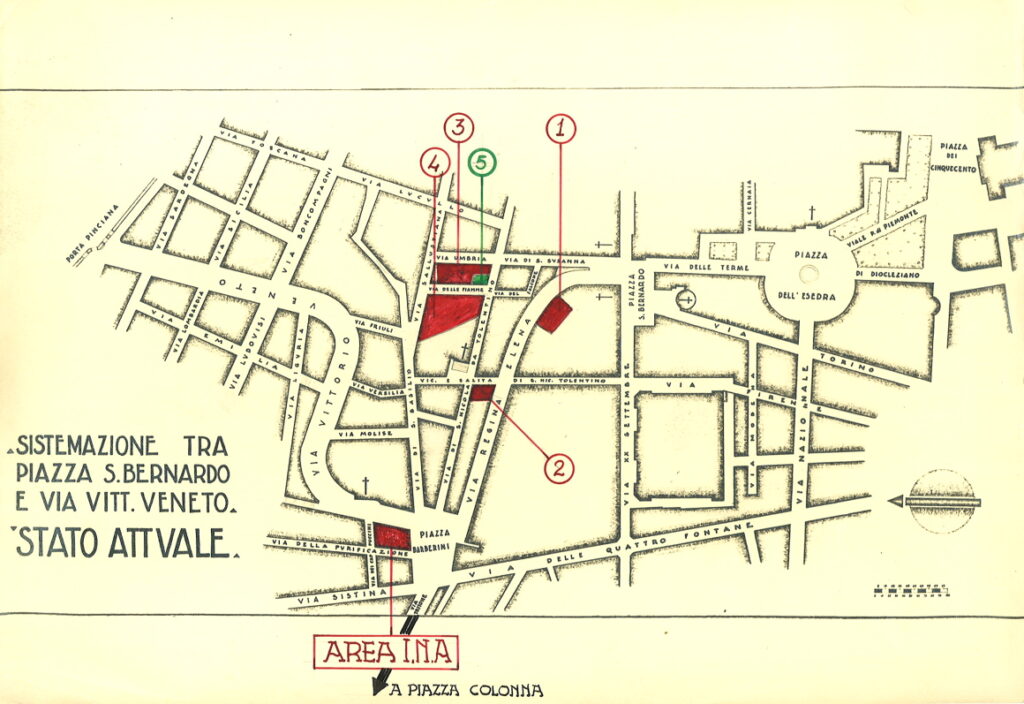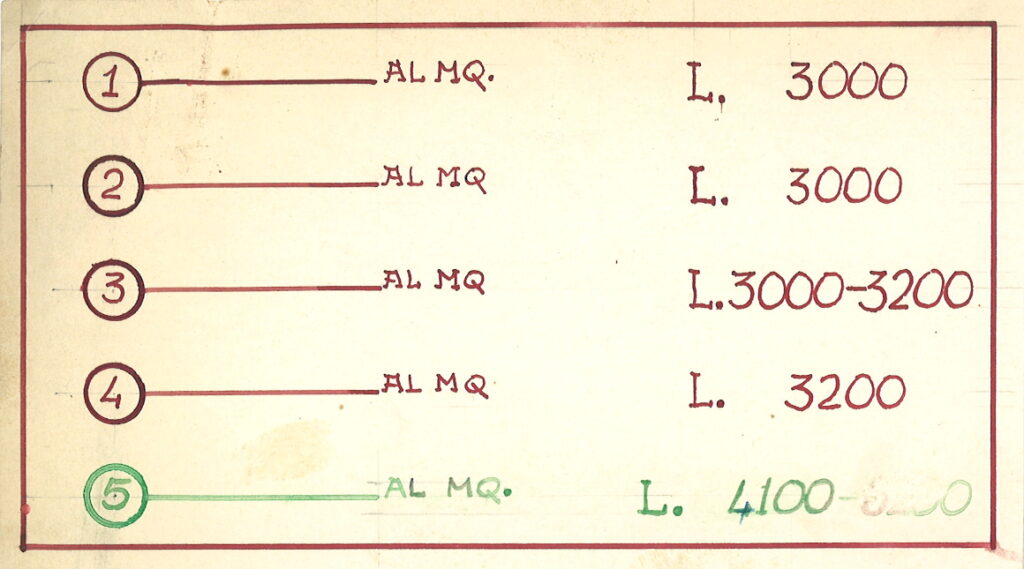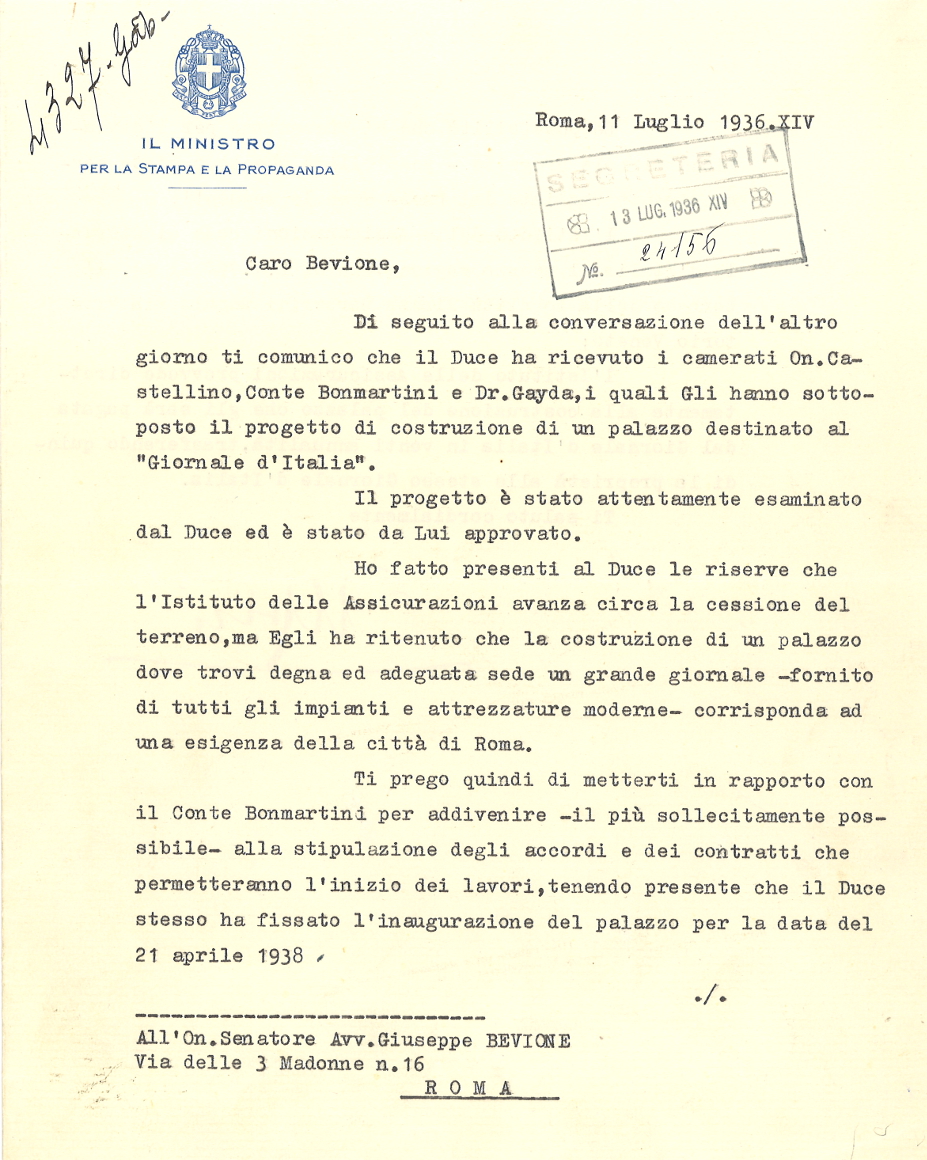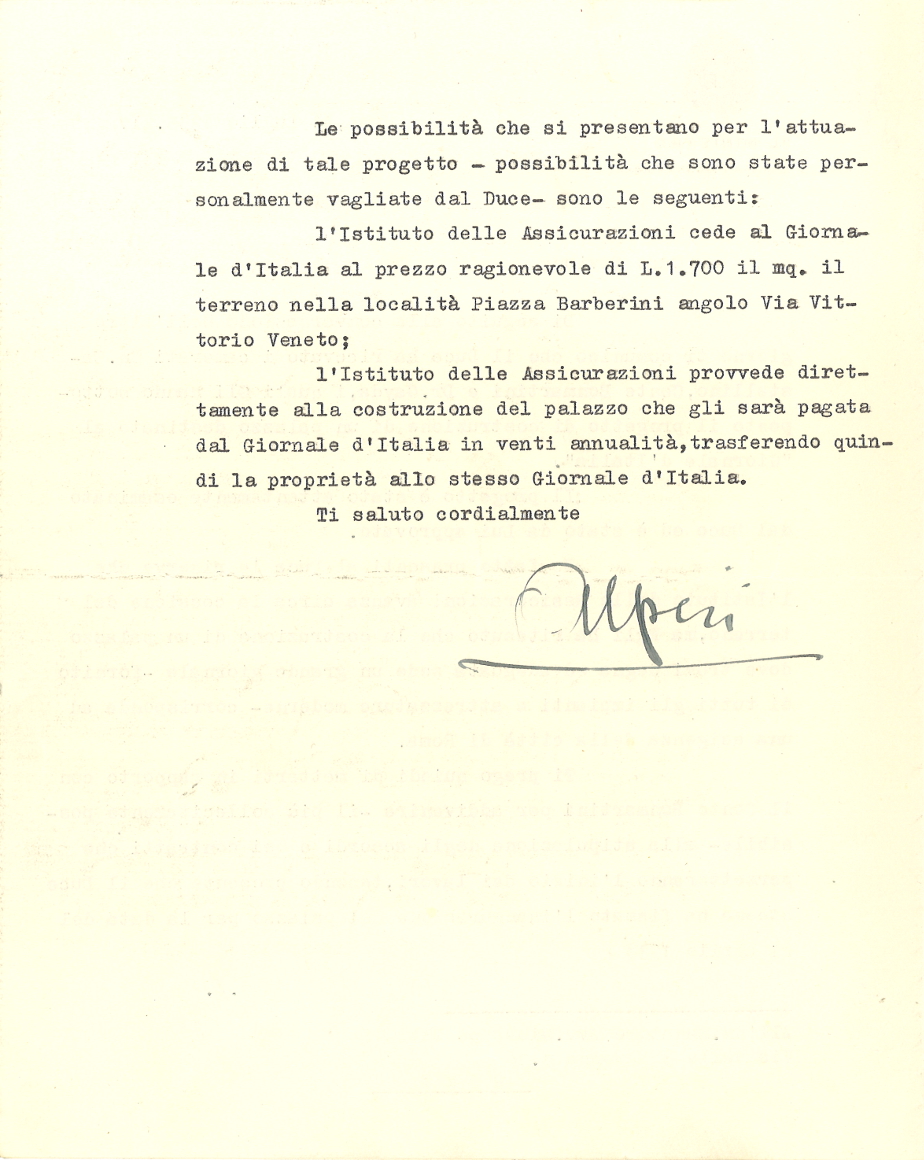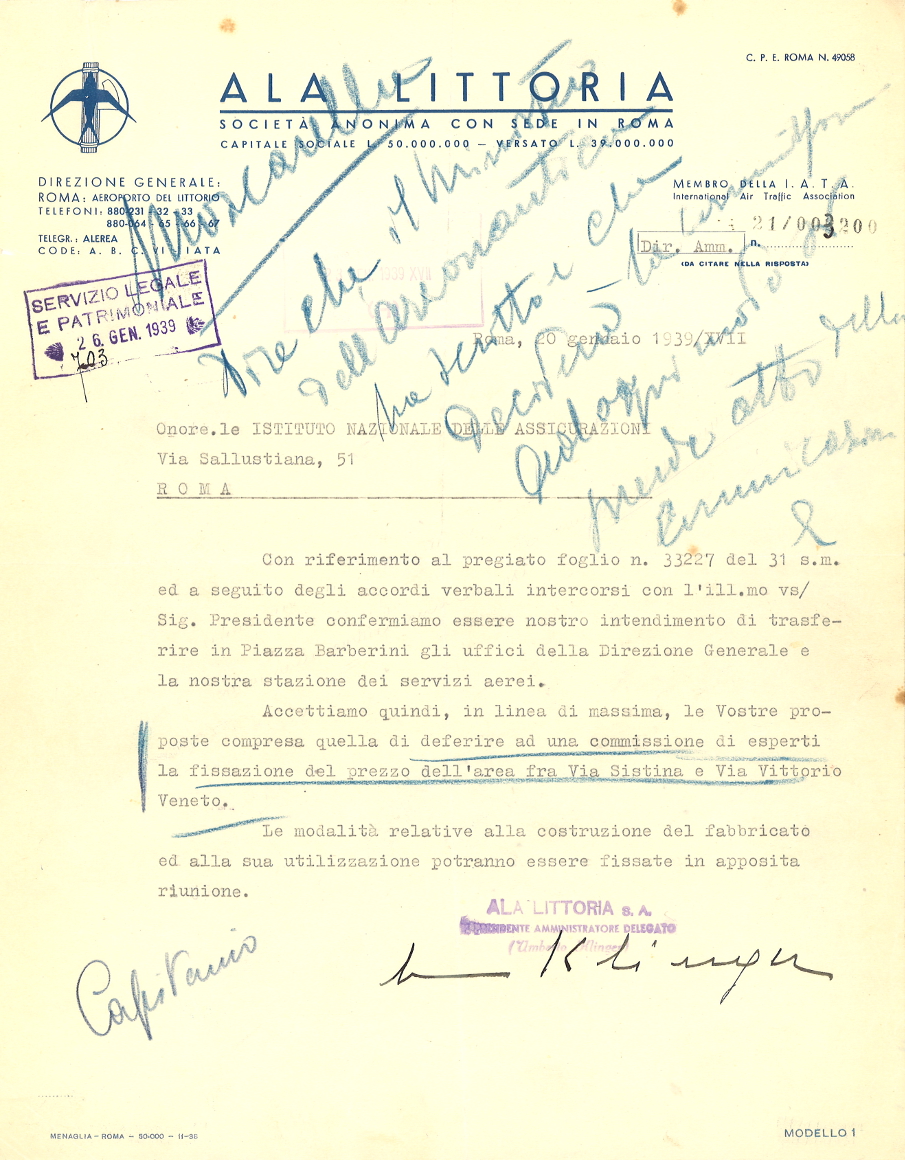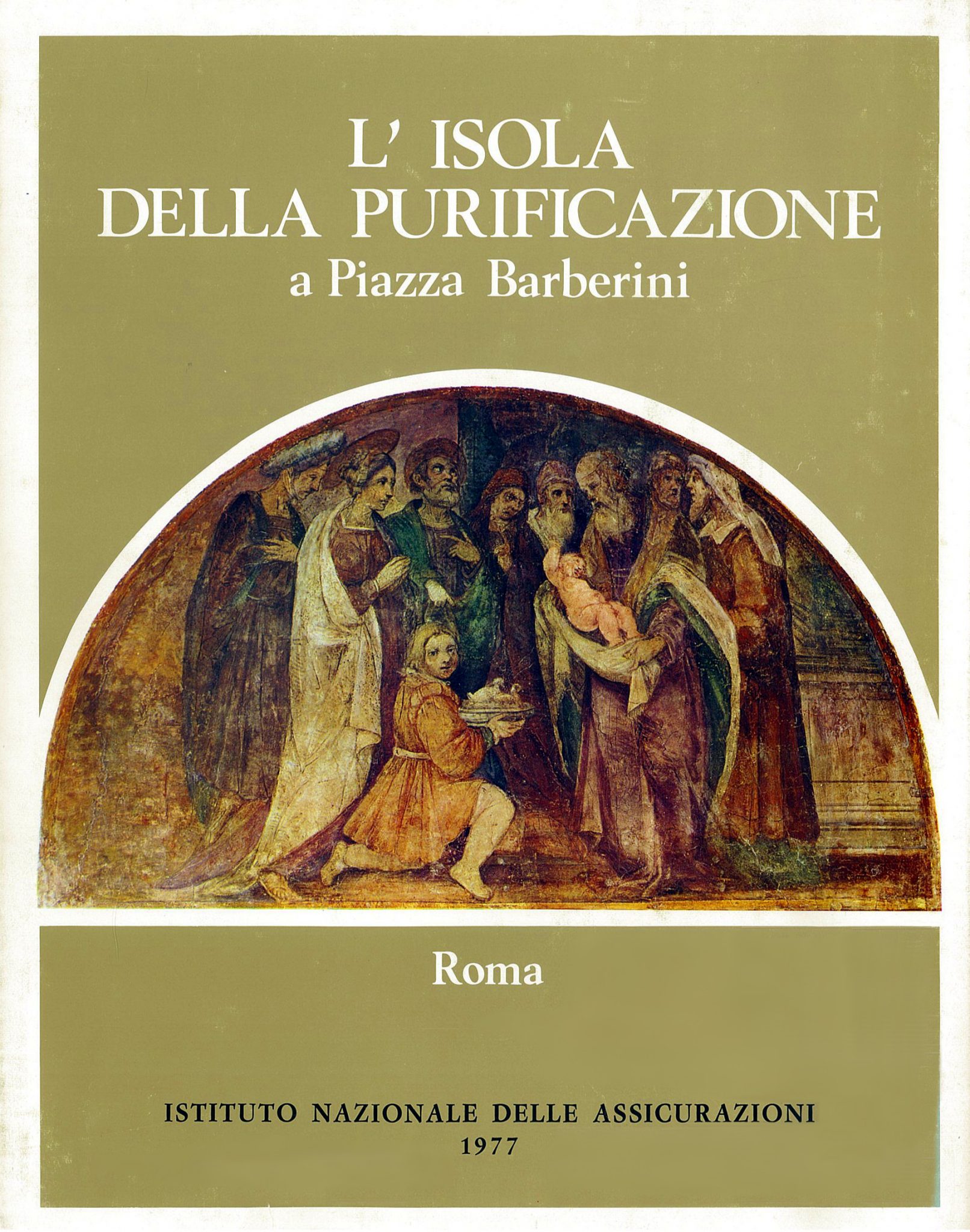The INA building in Piazza Barberini disputed in the Fascist era: a journey through archive papers
20 April 2018
In 1935 the Istituto Nazionale delle Assicurazioni (INA) bought the complex bounded by Piazza Barberini, Via Vittorio Veneto, Via dei Cappuccini (formerly Via Ferrea) and Via della Purificazione, in the Colonna district of central Rome – one of the most evocative areas of the eternal city – for the sum of 350,000 dollars, from the Foreign Mission Board of the Southern Baptist Convention, based in Richmond, Virginia.
This block, containing various historical structures (the corner pillar dates from 1550), belonged to the Ferri family until 1818, when it was taken over by the Lezzani family. The “Palazzino della Purificazione”, in Piazza Barberini, contains the young Giovanni Baglione’s fresco The Presentation of Jesus at the Temple, commissioned by Mario Ferri Orsini at the end of the sixteenth century.
It was a particularly prudent acquisition because of the redevelopment opportunities, as evidenced by the many purchase offers received by INA over the years.
The most politically involved approach came in 1936 from the Giornale d’Italia, backed by Dino Alfieri, minister for the Press and Propaganda, who in July of that year wrote to Giuseppe Bevione, the INA President, to inform him that Benito Mussolini had already approved the newspaper’s plan to transfer its headquarters to Piazza Barberini.
Bevione, who considered the proposed purchase unacceptable, quite properly referred the matter to the INA board, and at the same time sent a stern reply to Mussolini’s special secretary, Osvaldo Sebastiani, a former advisor to INA.
In a confidential note to the Duce, Bevione wrote that the proposal “if accepted, would represent excellent business for the Giornale d’Italia, but would be extremely damaging for the Institute. INA’s technical departments assess the value of the site, in the busiest and most elegant area of central Rome, to be 5,000 lire per square metre. The Institute, however, bought the site for 1,700 lire per square metre, thanks to prudent management decisions taken previously, but this would not entitle a private company, rather than the State, to benefit from the great increase in value of the land had the new building not been built for and funded by the Institute […] for these reasons the President of the Institute will have to advise the Board of Directors of his opposition to the proposal of the Giornale d’Italia”.
Alfieri then telephoned the INA President to inform him that “in the light of the new facts, it is considered that the proposal of the Giornale d’Italia should not be put before the Board”, and that he himself would explain the political aspects of the affair.
In 1939 Ala Littoria – the first state airline created by the regime in 1934, with the support of the Air Ministry – made a new approach, intending to have its general management offices transferred to Piazza Barberini. The new building would have to include “a large and well-designed air terminal”. This also came to nothing.
In place of the old complex, INA considered building a large hotel for the World Fair that was to take place in Rome EUR in 1942. The architects Alberto Calza Bini, Carlo Broggi, Gino Peresutti and Pietro Aschieri worked on the design, which never got further than paper.
Another project that never came to fruition was that of Adalberto Libera, in the Fifties. The earlier projects, which included demolition of the complex and expropriation of the adjacent block, were abandoned because of bureaucratic delays and the onset of war, while the Libera project was rejected because of non-compliance with the 1931 regulatory plan.
In the late sixties the block, which still retains certain eighteenth and nineteenth century features, remained unaffected by transformation projects begun in the area above Piazza Barberini before the Second World War, and underwent extensive restoration work of a conservative nature under the guidance of Cesare Costantini.
In 1977 INA published a splendid volume describing the restoration work, L’isola della Purificazione a Piazza Barberini [The Island of Purification at Piazza Barberini], which not only relates how the work brought new life to old walls, but also recounts the history of the immediate area.
Though partially incomplete, the documentation describing the restoration work, the unrealized projects, and the ownership of the complex, is kept in the Historical Real Estate Fonds of the INA Assitalia Historical Archive, and has recently been inventoried.
